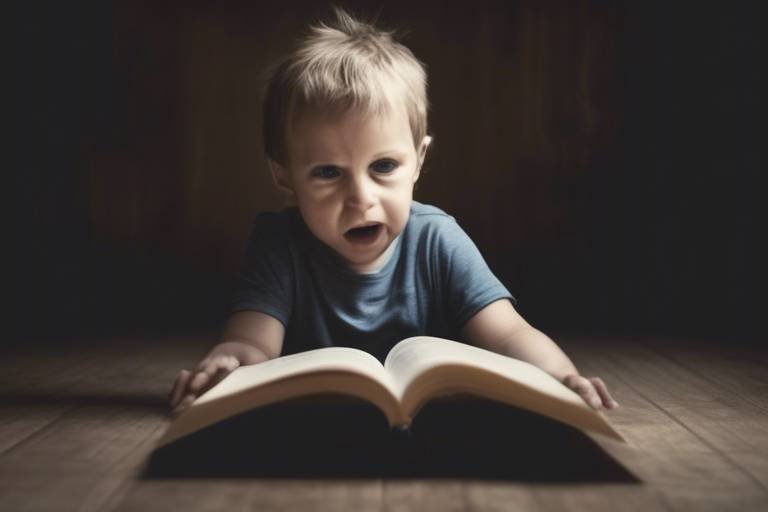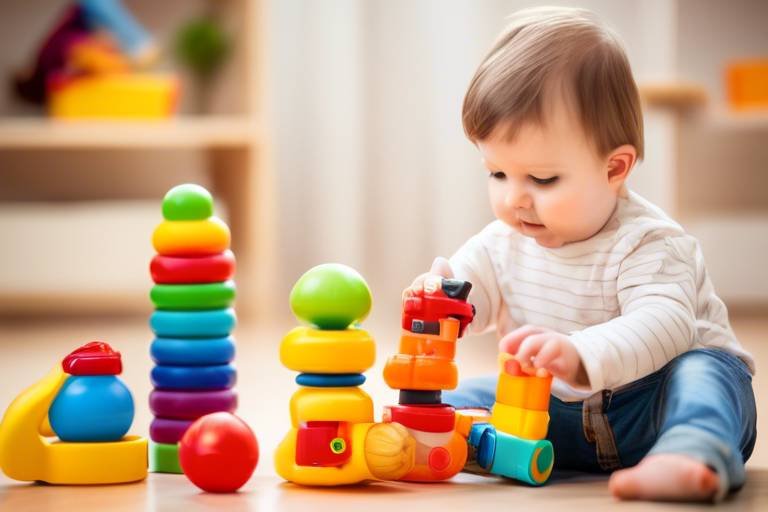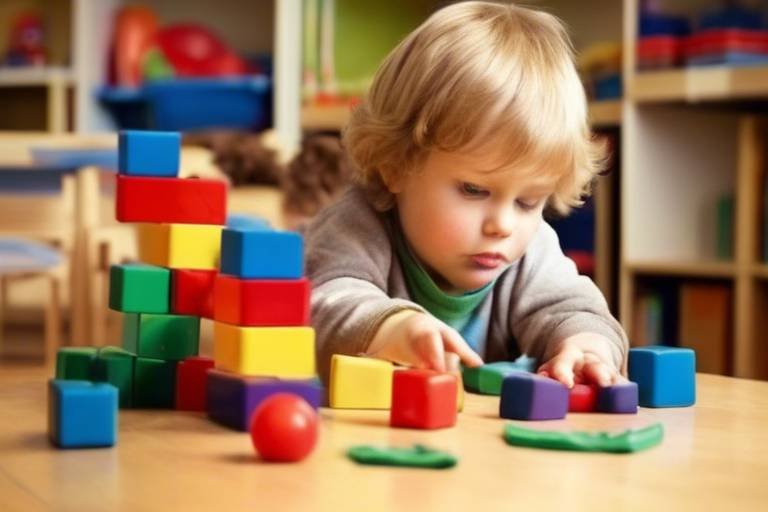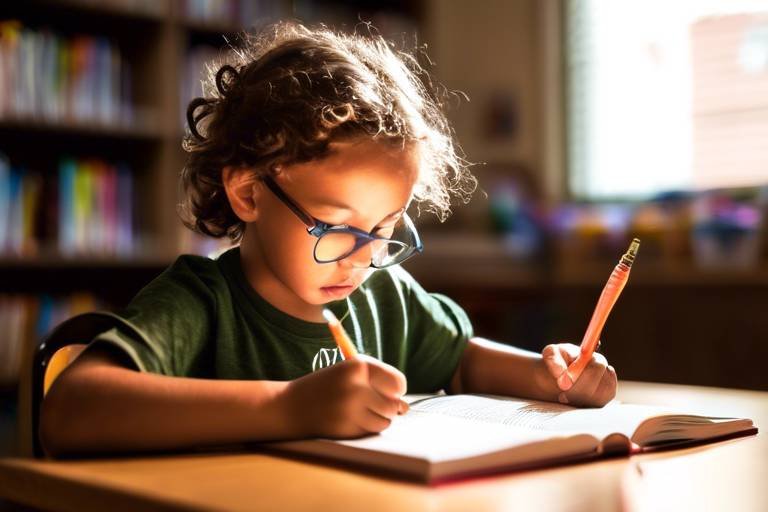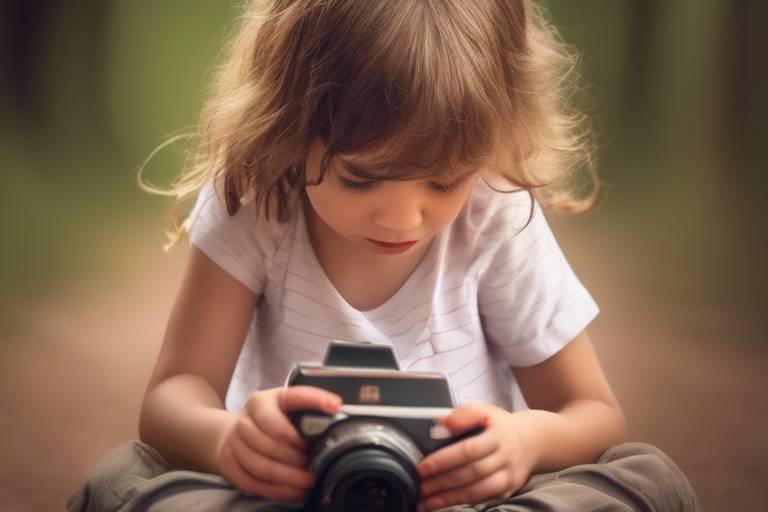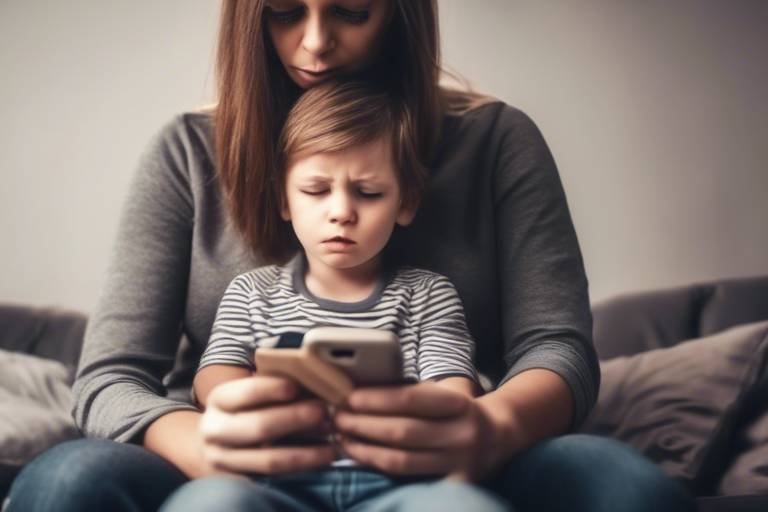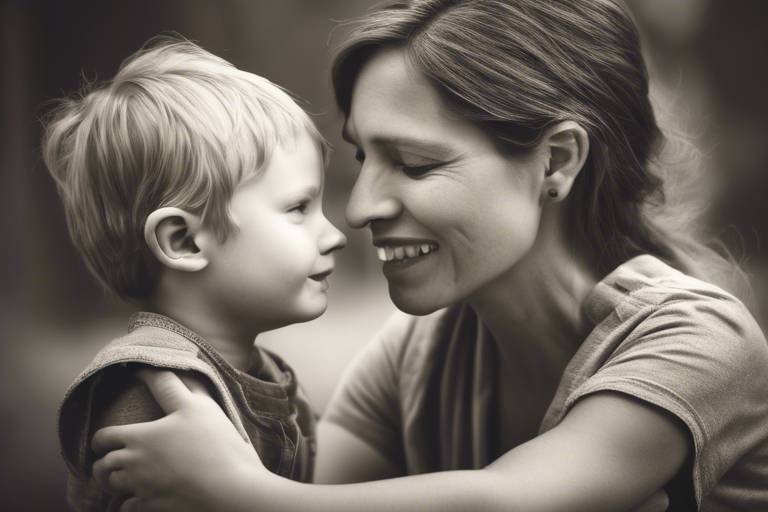Understanding and Tackling Your Child’s Fears
Every parent knows that childhood can be a rollercoaster of emotions, and one of the most challenging aspects is dealing with fears. From the moment they take their first steps into the world, children encounter various situations that can trigger anxiety and fear. These fears can range from the benign, like a fear of the dark, to more complex issues such as separation anxiety or social fears. Understanding the nature of these fears is crucial for parents who want to support their children through these emotional hurdles. It's like being a detective; you need to investigate the root of the fear before you can help solve the mystery.
Fears are a natural part of childhood development, and while they can be distressing for both children and parents, they also serve an important purpose. They can teach children about their environment and help them develop coping mechanisms. However, it's essential to recognize when a fear becomes overwhelming or debilitating. This is where parents can step in to provide guidance and support. Think of it as being a lighthouse in a stormy sea; your child may feel lost in their fears, but your steady presence can guide them back to safety.
As we delve deeper into the world of childhood fears, we’ll explore common fears, the psychological factors at play, and effective strategies parents can employ to help their children navigate these challenges. We’ll also take a closer look at how different developmental stages influence fears and how media exposure can shape a child's perception of fear. By understanding these elements, parents can create a nurturing environment that fosters resilience and confidence in their children.
Children often experience a wide range of fears, and recognizing these fears is the first step in addressing them effectively. Common fears include:
- The Dark: Many children are afraid of the dark due to their vivid imaginations and the unknown.
- Separation Anxiety: This is particularly common in younger children who may fear being away from their parents.
- Imaginary Creatures: As children’s imaginations grow, so do their fears of monsters or ghosts.
- Social Situations: As children enter school, they may develop fears related to making friends or speaking in front of others.
By recognizing these common fears, parents can better prepare themselves to support their children. It's important to remember that these fears are not trivial; they are very real to the child experiencing them. Just as an adult might feel anxious about a job interview or a public speaking engagement, children feel genuine fear about their own challenges.
Understanding the psychology behind childhood fears can provide valuable insights into a child's behavior and emotional responses. Fear is a natural and instinctual response to perceived threats, and for children, these threats often come from misunderstandings or lack of experience. For example, a child might fear a loud noise because they don't yet understand what it is. This is where parents can step in, helping to demystify the world around them.
As children grow, their fears evolve, often reflecting their developmental stage. Recognizing these stages can help parents anticipate and manage their child's fears more effectively. For instance, during infancy to toddlerhood, fears often revolve around separation and unfamiliarity. Parents can help by developing comforting routines that provide a sense of security.
In this stage, children may display anxiety when separated from their primary caregiver. This fear is rooted in the child's need for security and attachment. Establishing a consistent goodbye ritual can help ease this anxiety, making transitions smoother.
As children enter preschool, their fears may evolve to include imaginary creatures or social anxieties. Identifying these fears is crucial. Parents can provide appropriate reassurance, helping children understand that their fears are normal and manageable.
In today’s digital age, media exposure can significantly influence children's fears. The content they consume can shape their perceptions of danger and safety. Parents should be mindful of the media their children engage with, as scary movies or news reports can exacerbate existing fears or create new ones. Open discussions about what they see and hear can help children process these experiences and reduce anxiety.
There are numerous strategies parents can implement to help their children confront and overcome their fears, fostering resilience and confidence. One of the most effective methods is to encourage open communication. By creating a safe space for children to express their feelings, parents can help them understand that they are not alone in their experiences. It's like opening a window in a stuffy room; suddenly, the air feels fresher and more manageable.
Encouraging open discussions about fears allows children to articulate their feelings and fears without judgment. This dialogue can help demystify their fears, making them feel less daunting.
Another effective approach is gradual exposure to feared situations. This technique helps children build coping mechanisms over time, reducing anxiety and making them feel more secure in facing their fears. For instance, if a child is afraid of the dark, parents can start by dimming the lights gradually instead of turning them off completely.
Q: How can I tell if my child's fear is normal?
A: Most childhood fears are normal and part of development. However, if a fear interferes with daily activities or causes significant distress, it may be worth discussing with a professional.
Q: Should I confront my child's fears directly?
A: Gradual exposure is often more effective than direct confrontation. Start small and build up to bigger challenges.
Q: How can I help my child feel secure during transitions?
A: Establishing routines and rituals can provide comfort and predictability, helping your child feel more secure.

Recognizing Common Childhood Fears
As parents, it's essential to recognize that childhood fears are a normal part of development. These fears can range from the seemingly trivial to those that can genuinely impact a child's emotional well-being. Understanding these fears is the first step toward helping your child navigate through them. Some of the most common fears include:
- The Dark: Many children experience a fear of the dark, often due to a vivid imagination that conjures up scary thoughts when the lights go out.
- Separation Anxiety: This fear typically manifests when a child is separated from their primary caregiver, leading to feelings of insecurity and distress.
- Monsters and Imaginary Creatures: As children begin to explore their imagination, they may become frightened by the idea of monsters lurking under the bed or in the closet.
- Social Situations: As children enter new environments, such as preschool, they may develop fears related to social interactions and making new friends.
- Natural Disasters: Exposure to news about earthquakes, hurricanes, or other disasters can trigger fears about safety and security.
Recognizing these fears is crucial because it allows parents to validate their child's feelings. Instead of dismissing their fears as silly, acknowledging them can foster trust and open communication. For instance, if a child expresses fear of the dark, instead of saying, "There's nothing to be afraid of," you might say, "I understand that the dark can be scary sometimes." This approach not only reassures the child but also encourages them to share their feelings openly.
Moreover, it's important to note that fears can evolve as children grow. What may seem like a minor concern to an adult can feel monumental to a child. As they transition through different developmental stages, their fears may shift from tangible threats, like monsters, to more abstract concerns, such as fear of failure or rejection. By keeping an open dialogue about their fears, parents can help children develop coping strategies, ultimately empowering them to face their fears head-on.
In summary, recognizing common childhood fears is the first step in helping your child navigate their emotional landscape. By validating their feelings and maintaining an open line of communication, you can create a safe space for your child to express themselves. This not only helps them confront their fears but also fosters resilience and emotional intelligence as they grow.

The Psychology Behind Childhood Fears
Understanding the psychology behind childhood fears is crucial for parents who want to support their children effectively. Fear is a natural response to perceived threats, and for children, these threats can often be abstract or exaggerated. Imagine a child who sees shadows on the wall and suddenly believes there’s a monster lurking in the corner. This reaction stems from their developing cognitive abilities and their limited understanding of the world around them.
One of the primary psychological factors contributing to childhood fears is imagination. Children have vivid imaginations, and this can lead to scenarios that adults might dismiss as irrational. For instance, a child might fear the dark not because they truly believe something is there, but because their mind conjures up images of what could be. This is akin to how adults might feel anxious before a big presentation, imagining every possible negative outcome. It’s all about the power of the mind.
Another significant aspect is the role of experience. Children learn to fear things through both direct experiences and observations. If a child witnesses a parent reacting fearfully to a spider, they may adopt that same fear, associating the spider with danger. This modeling behavior shows how children often mimic the emotional responses of adults around them. Moreover, traumatic experiences, even minor ones, can leave lasting impressions that shape a child's perception of safety and danger.
Developmental stages also play a critical role in shaping fears. As children grow, their understanding of reality evolves, leading to different types of fears at various ages. For instance, infants may fear separation from their caregivers, while preschoolers might develop fears of imaginary creatures or the dark. By recognizing these stages, parents can better anticipate and address their child's fears. Here’s a quick breakdown:
| Developmental Stage | Common Fears |
|---|---|
| Infancy to Toddlerhood | Separation anxiety, fear of strangers |
| Preschool Age | Imaginary creatures, fear of the dark |
| Early School Years | Social anxieties, fear of failure |
Furthermore, it’s essential to consider the impact of external influences, such as media consumption. Children are exposed to various forms of media that can amplify their fears. A scary movie or a frightening story can lead to heightened anxiety about things that might not have previously bothered them. As parents, being mindful of what children watch and read can help mitigate unnecessary fears. It’s like giving them a shield against the overwhelming world of media.
In conclusion, understanding the psychology behind childhood fears is not just about identifying what scares children; it’s about recognizing the underlying factors that contribute to these fears. By fostering a supportive environment, parents can help their children navigate their fears, transforming them from sources of anxiety into opportunities for growth and resilience.
- What are some common fears in children? Children often fear the dark, separation from parents, and imaginary creatures.
- How can I help my child overcome their fears? Encourage open communication, validate their feelings, and gradually expose them to their fears.
- Is it normal for children to have fears? Yes, fears are a normal part of childhood development and can vary with age.

Developmental Stages and Fears
As children grow, their fears evolve, often reflecting their developmental stage. Understanding these stages is crucial for parents who want to help their kids navigate the sometimes tumultuous waters of fear. It's like watching a flower bloom; each petal represents a different phase of growth, and with each phase comes new challenges. At different ages, children encounter unique fears that can be both bewildering and concerning for parents. Recognizing these fears allows parents to anticipate challenges and provide the right support at the right time.
During infancy to toddlerhood, children's fears are primarily focused on separation from their caregivers and the unknown. This is a time when children are becoming more aware of their surroundings but still rely heavily on their parents for comfort and security. For instance, a toddler might cry when a parent leaves the room, not out of defiance but from a deep-seated fear of being alone. This fear can be alleviated by establishing comforting routines, such as a consistent bedtime ritual or a special goodbye phrase that reassures the child that their parent will return.
As kids transition into the preschool and early school years, their fears often shift to encompass imaginary creatures, such as monsters or ghosts, as well as social anxieties related to new environments and interactions with peers. This shift can feel like a rite of passage, where the child’s imagination begins to run wild, leading to vivid scenarios that can be both thrilling and terrifying. For example, a child might be afraid of the dark because they imagine there are monsters lurking in the shadows. Parents can help by validating these fears while also encouraging children to confront them gently. Techniques such as playing with shadows or using a nightlight can make a significant difference.
Moreover, the impact of media cannot be ignored in this context. With the rise of digital content, children are exposed to a plethora of stories and images that can amplify their fears. Parents should be vigilant about the types of media their children consume. Understanding that certain movies or shows can introduce frightening concepts can help parents guide their children towards more age-appropriate content. Encouraging discussions about what they see can also demystify fears and help children process their feelings.
In summary, recognizing the fears associated with different developmental stages is essential for effective parenting. By understanding what’s typical at each stage, parents can create a nurturing environment that helps their children feel safe and supported. It’s a journey that requires patience and empathy, but with the right tools and strategies, parents can help their children blossom into resilient individuals who are capable of facing their fears.
- What are some common fears in infants and toddlers? Infants and toddlers often fear separation from their caregivers and unfamiliar situations.
- How can I help my preschooler with imaginary fears? Validate their feelings and encourage them to express their fears. Use play to help them confront these fears in a safe environment.
- What role does media play in childhood fears? Exposure to frightening content can amplify fears; parents should monitor and discuss media consumption with their children.

Infancy to Toddlerhood
During the critical period of , children are just beginning to explore the world around them. It’s a time filled with wonder, but also uncertainty, which can lead to a variety of fears. One of the most common fears at this stage is separation anxiety. When a child is separated from their primary caregiver, they may experience intense feelings of distress. This is completely normal and is a sign of the strong attachment they have formed. As parents, it’s essential to recognize that these fears are a natural part of development and not a sign of weakness.
Additionally, fears of unfamiliarity can also emerge during this stage. Babies and toddlers may become frightened by new faces, strange environments, or even unexpected noises. Imagine how overwhelming it must be for a tiny human to navigate a world filled with towering adults and unpredictable sounds! To help ease these fears, parents can establish comforting routines that provide a sense of security. For instance, creating a consistent bedtime routine can help children feel more secure and less fearful of nighttime.
Here are a few strategies to help manage these fears effectively:
- Familiarization: Introduce your child to new environments gradually. For example, if you're visiting a new relative's home, bring along a favorite toy or blanket to provide comfort.
- Consistent Routines: Establishing daily routines can help children feel more secure and less anxious about the unknown.
- Reassurance: Always reassure your child that you are nearby and that they are safe. Your calm demeanor can greatly influence their feelings of security.
Moreover, it’s crucial to remember that children often look to their parents for cues on how to react in new situations. If you remain calm and collected, your child is more likely to feel secure. On the other hand, if you exhibit anxiety, they may pick up on that and feel even more frightened. It’s like a dance; the more in sync you are, the smoother it goes.
In conclusion, understanding the fears that arise during infancy and toddlerhood is vital for parents. By recognizing these fears and implementing supportive strategies, you can help your child navigate this challenging yet exciting period. Remember, it’s all about creating a safe space where they can explore and grow without fear holding them back.
Q1: What are some common fears in infants and toddlers?
A1: Common fears include separation anxiety, fear of strangers, and fear of loud noises. Each child is unique, so their fears may vary.
Q2: How can I help my child with separation anxiety?
A2: Gradually increase the time you spend apart, reassure them of your return, and create a consistent goodbye ritual to help ease their anxiety.
Q3: Is it normal for toddlers to be afraid of the dark?
A3: Yes, many toddlers develop a fear of the dark. Using night lights and comforting bedtime routines can help alleviate this fear.

Preschool and Early School Years
As children transition from the cozy confines of home to the bustling environment of preschool, they encounter a whirlwind of new experiences that can stir up a variety of fears. During this pivotal stage, it's not uncommon for kids to develop fears surrounding imaginary creatures, such as monsters lurking under the bed or ghosts hiding in the closet. These fears are often fueled by vivid imaginations and stories they hear, whether from peers or media. It's like stepping into a new world where everything is exciting yet a little overwhelming, much like diving into a pool for the first time; the water may seem inviting, but the depths can be intimidating.
Moreover, social anxieties can also emerge during these formative years. Children may experience fears related to separation from their parents or anxiety about making friends. This is akin to standing on the edge of a diving board, feeling the thrill of jumping but also the fear of what lies below. They might worry about whether they’ll fit in or if they’ll be accepted by their peers. Understanding these fears is crucial for parents, as it allows them to provide the necessary support and reassurance, helping their little ones navigate through these challenges.
To effectively address these fears, parents can create a safe space for their children to express their feelings. Open conversations about their fears can help children feel validated and understood. For instance, when a child shares their fear of the dark, a parent might say, “I understand, buddy. The dark can be scary sometimes. Want to talk about what you think is in there?” This approach not only normalizes their feelings but also opens the door for discussions that can lead to coping strategies.
Additionally, engaging in imaginative play can serve as a powerful tool for alleviating fears. Pretend play allows children to confront their fears in a safe and controlled environment. For example, if a child is afraid of monsters, parents can create a game where they “defeat” the monsters together, turning fear into fun. This not only helps to diminish the fear but also fosters creativity and problem-solving skills. By transforming fearful situations into playful scenarios, children can learn to manage their emotions and build resilience.
It's also essential for parents to monitor the media their children consume, as exposure to frightening content can exacerbate fears. Parents should aim to provide age-appropriate materials that promote positive messages. For instance, instead of watching scary movies, opting for light-hearted animated films can help children feel more secure. By curating their media diet, parents can play a significant role in shaping their children's perceptions of fear.
In summary, the preschool and early school years can be a challenging time for children as they grapple with their fears. By fostering open communication, encouraging imaginative play, and being mindful of media consumption, parents can help their children not only confront their fears but also emerge stronger and more confident. It's a journey of discovery for both parents and children, filled with opportunities to learn, grow, and bond over shared experiences.
- What are the most common fears in preschool-aged children?
Common fears include fear of the dark, fear of separation from parents, and fear of imaginary creatures.
- How can I help my child with their fears?
Encourage open discussions about their fears, engage in imaginative play, and monitor their media consumption.
- Is it normal for children to have fears?
Yes, it is completely normal for children to experience fears as they navigate new environments and experiences.
- When should I be concerned about my child's fears?
If fears significantly interfere with their daily life or cause extreme distress, it may be worth consulting a professional.

Impact of Media on Fears
In today's digital age, media plays a crucial role in shaping children's perceptions of the world around them. From animated shows to blockbuster movies, the content children consume can significantly influence their fears. Have you ever noticed how a child who watches a scary movie might suddenly become afraid of the dark or develop a fear of monsters? This phenomenon isn't just a coincidence; it's a reflection of how powerful storytelling and imagery can be in a child's mind.
Children's imaginations are incredibly vivid, and they often struggle to distinguish between reality and fiction. When they see frightening scenes or hear about scary events on TV or online, it can trigger an emotional response that leads to irrational fears. For instance, a child who watches a horror-themed cartoon might start to believe that monsters are lurking in their closet. This is where the impact of media becomes particularly evident.
Moreover, the types of media children are exposed to can vary widely, and not all are created equal. Some content is designed to entertain and educate, while other material can be downright terrifying. It's essential for parents to be aware of what their children are watching. Here are a few key points to consider:
- Content Rating: Always check the ratings of movies and shows. Content rated for older audiences may contain themes or imagery that could be frightening for younger viewers.
- Discussing Scary Content: After watching something potentially scary, engage your child in a conversation. Ask them how it made them feel and reassure them that it's just a story.
- Limit Exposure: Be mindful of the amount of media your child consumes. Too much exposure to frightening content can exacerbate their fears.
Additionally, the rise of social media has introduced new fears related to social interactions and body image. Children might develop anxieties about how they are perceived by their peers, especially when they see curated images of "perfect" lives online. This can lead to feelings of inadequacy or fear of rejection, which are just as troubling as the classic fears of monsters or darkness. As parents, it's crucial to foster a healthy media environment where children feel safe and supported.
In summary, the impact of media on a child's fears is a complex interplay of imagination, perception, and emotional response. By being proactive and involved in their media consumption, parents can help mitigate these fears and promote a more positive understanding of the world. It's about striking a balance—allowing children to enjoy media while also teaching them to process what they see critically.
Q1: How can I tell if my child's fears are normal?
A1: It's common for children to have fears, especially during certain developmental stages. If the fear is affecting their daily life or causing significant distress, it may be worth consulting a professional.
Q2: What should I do if my child is afraid of something I think is silly?
A2: Remember that fears are subjective. Instead of dismissing their fear, try to understand it and provide reassurance. Validating their feelings can help them feel supported.
Q3: Can I use media to help my child overcome their fears?
A3: Yes! Using age-appropriate media that addresses fears in a gentle way can be beneficial. Look for stories that show characters overcoming similar fears, as this can provide a sense of hope and empowerment.

Effective Strategies for Addressing Fears
When it comes to helping your child tackle their fears, it’s essential to remember that every child is unique, and what works for one may not work for another. However, there are several effective strategies that can serve as a roadmap for parents navigating this challenging terrain. First and foremost, open communication is crucial. Creating a safe space for your child to express their fears without judgment can make a world of difference. Ask them questions like, “What scares you the most?” or “Can you tell me about a time when you felt afraid?” This not only helps children articulate their feelings but also reassures them that they are not alone in their experiences.
Another powerful approach is the use of gradual exposure techniques. This method involves gently introducing your child to the source of their fear in a controlled and supportive environment. For instance, if your child is afraid of the dark, you might start by dimming the lights gradually while reading a story together. Over time, as they become more comfortable, you can increase the exposure until they feel secure enough to face their fear head-on. It's like training for a marathon; you start with short distances and build up your stamina, allowing your child to develop coping mechanisms that will serve them well.
Additionally, incorporating play therapy can be an effective strategy. Children often express their fears through play, and engaging in role-playing games can help them process their emotions. For example, if your child fears monsters, you could create a game where they are the hero who banishes the monsters using their imagination. This not only empowers them but also makes the process of confronting fears feel like an adventure rather than a chore.
Moreover, modeling behavior is another vital strategy. Children learn a lot by observing their parents. If you demonstrate healthy ways of coping with fear, such as talking about your own fears or facing challenges with a positive attitude, your child is likely to mimic these behaviors. Share stories of your own experiences with fear and how you overcame them; it can be incredibly inspiring for them. Remember, you are their first teacher, and your actions speak volumes.
Finally, it’s important to celebrate small victories. Every time your child faces their fear, no matter how small the step, acknowledge it! This could be as simple as saying, “I’m so proud of you for trying!” or even creating a reward chart to visually track their progress. Positive reinforcement boosts their confidence and encourages them to keep pushing through their fears.
- What should I do if my child refuses to talk about their fears?
Sometimes children may not be ready to discuss their fears. In such cases, try engaging them through storytelling or drawing, which can help them express their feelings indirectly. - How long does it take for a child to overcome their fears?
Every child is different. Some may take weeks while others might need months. Patience and consistent support are key. - When should I seek professional help for my child's fears?
If your child's fears are significantly affecting their daily life, such as causing them to avoid school or social situations, it may be time to consult a child psychologist.

Open Communication
Open communication is like a bridge connecting parents and children, allowing them to traverse the often tumultuous waters of childhood fears together. When children feel comfortable discussing their fears, it not only helps them articulate their feelings but also reassures them that they are not alone in their experiences. Imagine a child standing at the edge of a deep, dark forest, feeling overwhelmed and scared. If a parent reaches out, holding their hand and guiding them through the shadows, that child will feel empowered to take the first step. This is the essence of open communication.
To foster this environment, parents should create a safe space where children can express themselves without fear of judgment. It’s essential to listen actively—this means not just hearing the words but also understanding the emotions behind them. When a child shares their fear of the dark, for instance, instead of dismissing it with a simple “there’s nothing to worry about,” a parent might say, “I understand that it feels scary. Can you tell me what makes it feel that way?” This approach invites dialogue and shows the child that their feelings are valid.
Moreover, using age-appropriate language can significantly enhance the quality of these conversations. For younger children, using metaphors or stories can make discussions more relatable. For example, a parent might explain that fear is like a shadow—sometimes it seems big and scary, but when you shine a light on it, it shrinks down to size. This not only simplifies the concept of fear but also empowers children to confront it head-on.
Additionally, parents can encourage their children to share their fears by asking open-ended questions. Instead of “Are you scared of the dark?” try asking, “What do you think about when it gets dark?” This invites deeper reflection and gives insight into the child’s thoughts. It’s also helpful to share personal experiences. When children see that their parents have faced fears, it normalizes their own feelings and provides a sense of solidarity.
In essence, open communication is crucial in helping children navigate their fears. It builds trust and strengthens the parent-child bond, creating a foundation where children feel secure enough to explore their emotions. Remember, it’s not just about addressing the fears themselves but also about nurturing a relationship where feelings can be expressed freely and openly.
- How can I tell if my child's fear is normal?
It's common for children to experience fears at different stages of development. If the fear is affecting their daily life or persists for an extended period, it may be worth discussing with a professional. - What should I do if my child refuses to talk about their fears?
Sometimes children may be hesitant to open up. Encourage them gently and try different approaches, such as storytelling or drawing, to help them express their feelings. - Is it okay to dismiss my child's fears?
No, dismissing fears can make children feel misunderstood and isolated. Instead, validate their feelings and help them understand that it's okay to be scared.

Gradual Exposure Techniques
When it comes to helping your child tackle their fears, can be incredibly effective. Imagine standing at the foot of a tall mountain; the thought of climbing it can be daunting. However, if you take it one step at a time, the journey becomes manageable. This analogy perfectly encapsulates the essence of gradual exposure. By breaking down the feared situation into smaller, less intimidating steps, children can slowly build their confidence and resilience.
For instance, if your child is afraid of dogs, instead of thrusting them into a situation where they are surrounded by barking pups, start with something more subtle. You might begin by looking at pictures of dogs together, then progress to watching videos, and eventually, you can visit a friend who has a calm, friendly dog. This method not only eases anxiety but also allows children to process their fears in a safe environment.
Here’s how you can implement gradual exposure techniques effectively:
- Identify the Fear: Start by having an open conversation with your child about what specifically scares them. Is it the dark, the idea of being alone, or perhaps a fear of certain animals?
- Break It Down: Once you know the fear, break it down into smaller, manageable parts. For example, if your child is afraid of thunderstorms, you might start with discussing the weather, then move to watching a video of a storm, and finally, listen to thunder sounds together.
- Set a Comfortable Pace: Each child is different; some may need more time at each stage than others. Be patient and let your child lead the way. If they seem overwhelmed, it’s okay to take a step back.
- Celebrate Small Victories: Acknowledge and celebrate every small step your child takes. Positive reinforcement can boost their confidence and encourage them to face their fears head-on.
Another important aspect of gradual exposure is maintaining a supportive environment. Children need to feel safe and understood during this process. As a parent, your role is to reassure them that it’s okay to feel scared and that they are not alone in their journey. You can share your own experiences with fear and how you managed to overcome them, creating a sense of camaraderie.
Incorporating gradual exposure techniques into your child’s routine can lead to remarkable changes in their emotional well-being. Over time, as they face their fears in a controlled and gradual manner, they will develop not only coping strategies but also a sense of empowerment. Remember, the goal is not to eliminate fear entirely but to teach your child that they can face their fears and come out stronger on the other side.
Q: How long does it take for gradual exposure techniques to work?
A: The timeline can vary significantly from child to child. Some may show improvement within a few sessions, while others might take weeks or even months. The key is to be patient and consistent.
Q: What if my child refuses to participate in the exposure process?
A: It's essential to respect their feelings. Pushing too hard can backfire. Instead, try to engage them in a conversation about their fears and find out what they are comfortable with. You can also try to make the process more fun and engaging.
Q: Can gradual exposure techniques be used for adults as well?
A: Absolutely! Gradual exposure techniques are effective for individuals of all ages. The principles remain the same: start small and gradually work your way up to the more challenging aspects of the fear.
Frequently Asked Questions
- What are some common fears that children experience?
Children often face a variety of fears, including fear of the dark, separation anxiety, and fear of imaginary creatures. These fears can vary by age and developmental stage, so it's essential for parents to recognize and understand these common issues to provide the right support.
- How can I help my child cope with their fears?
One effective way to help your child is through open communication. Encourage them to talk about their fears without judgment, letting them know it's okay to feel scared. Gradual exposure to their fears in a safe and controlled manner can also help them build confidence and coping skills over time.
- Are childhood fears normal?
Absolutely! Childhood fears are a normal part of development. They often reflect a child's growing understanding of the world around them and can even serve as a healthy mechanism for learning about safety and boundaries.
- What role does media play in children's fears?
Media can have a significant impact on children's fears. Exposure to scary movies, news stories, or even intense video games can amplify their anxieties. It's crucial for parents to monitor what their children are watching and discuss any content that might be troubling.
- At what age do children's fears typically change?
Children's fears can change with their developmental stages. For example, infants may fear separation, while preschoolers might fear imaginary monsters. By understanding these phases, parents can better support their children through the transitions.
- How can I encourage my child to talk about their fears?
Creating a safe and open environment is key. Set aside time to talk, use engaging methods like storytelling or role-playing, and validate their feelings. Let them know that sharing their fears is a brave step and that they're not alone in feeling this way.
- What should I avoid when addressing my child's fears?
Avoid dismissing their fears or telling them to simply "get over it." This can make them feel misunderstood or ashamed. Instead, focus on empathy and understanding, guiding them through their feelings rather than minimizing them.
- When should I seek professional help for my child's fears?
If your child's fears are intense, persistent, or interfere with their daily life, it may be time to consult a professional. A child psychologist or counselor can provide tailored strategies and support to help your child manage their fears effectively.

